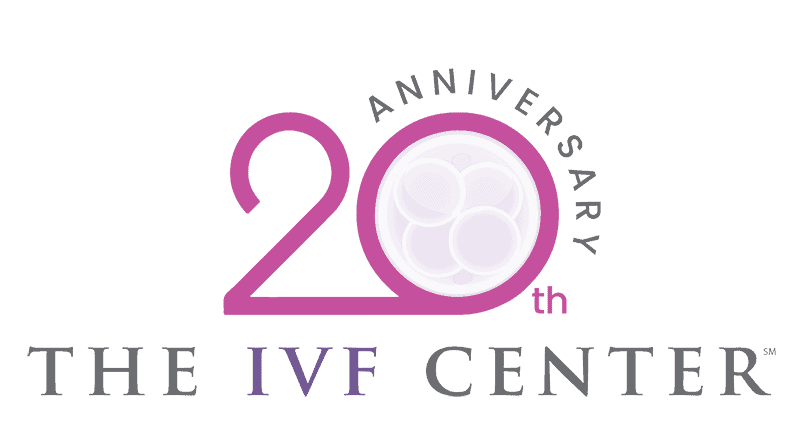The new field of oncofertility focuses on the importance of maintaining fertility in cancer patients using a multidisciplinary approach to include the fields of oncology, reproductive endocrinology, and molecular biology.
 Owing to the increasing success of oncologists over the past four decades, patients diagnosed with cancer are surviving longer, and care now focuses on improving quality of life and long-term health. Chemotherapy and radiation, the standards of care in cancer treatment, result in significant gonadotoxicity thereby impairing a woman’s (and man’s) fertility.
Owing to the increasing success of oncologists over the past four decades, patients diagnosed with cancer are surviving longer, and care now focuses on improving quality of life and long-term health. Chemotherapy and radiation, the standards of care in cancer treatment, result in significant gonadotoxicity thereby impairing a woman’s (and man’s) fertility.
As a result, cancer patients in their reproductive years are faced with another life crisis—preserving their fertility.
Over 100,000 women 45 years of age and younger are annually diagnosed with cancer. Between 1990 and 2008, overall cancer death rates decreased by 23% in men and 15% in women, representing approximately one million lives saved. Approximately 77% of cancer patients diagnosed younger than 45 years of age survive greater than 5 years. These rates are continuing to improve for the four most serious cancers: lung, colon, breast, and prostate. Consequently, in 2006, the American Society of Clinical Oncology recommended, “as part of the consent prior to therapy, oncologists should address the possibility of infertility with patients as early in treatment planning as possible” and “Fertility preservation is an important, if not necessary, consideration when planning cancer treatment in reproductive-age patients.”1 Nevertheless, Gwede et al revealed that while 82% to 84% of medical and radiation oncologists versus 51% of surgical oncologists “always/often” discuss fertility preservation with their patients, only 24% to 31% of all oncologists “rarely/never” refer for fertility preservation.
Fertility Preservation
Fertility preservation options depend on many factors. The age of the patient will provide insight to her ovarian reserve to contemplate the utility of fertility preservation. The tumor type, stage, and treatment plan determines the time available, if any, to proceed with an emergency in vitro fertilization (IVF) cycle. The patient’s relationship status may influence the choice of freezing eggs or embryos because IVF requires insemination with sperm unless egg freezing is chosen. Based on the virulence of the cancer, the patient’s health may preclude or allow an IVF cycle. Additionally, insurance coverage for IVF will determine the cost of fertility preservation treatment to the patient. In vitro fertilization coverage is only mandated in a limited number of states in the United States and is insurance provider–dependent in all other states. Lastly, and most importantly, the psychological toll on the patient should always be addressed.
For many years, postpubertal males have preserved their fertility by cryopreserving and storing semen samples. There are limited options of fertility preservation for children, and they currently involve ovarian tissue freezing, which is considered experimental. Nevertheless, there are options for adult female cancer patients to preserve their fertility.
Ovarian Effects From Cancer Treatment
The ovary is especially sensitive to chemotherapy given the finite number of oocytes available, and the reproductive impact is contingent on the dose of therapy and the patient’s age at treatment because younger patients are more likely to resist the damaging effects to the ovary. It is estimated that 40% of women younger than age 40 undergoing chemotherapy will experience ovarian failure following treatment. Alkylating agents, particularly the combination of oral CMF (cyclophosphamide, methotrexate, and fluorouracil), have the highest risk of ovarian failure. Post therapy, resumption of menses, if applicable, occurs in 6 months but may require up to 2 years.
It is important to note that the return of menstrual function does not equate with maintenance of pretreatment biologic ovarian age. Therapy results in the death of primordial ovarian follicles and interrupts follicle recruitment and maturation, resulting in decreasing ovarian reserve. So, the reproductive potential of a woman post-chemotherapy can still be impaired despite the return of menstrual cycles as demonstrated by a higher rate of infertility and lower ovarian reserve. Furthermore, even prior to therapy, cancer patients have a lower number of eggs retrieved after gonadotropin stimulation for fertility preservation than age-matched healthy controls.
Patients undergoing pelvic and abdominal radiation are at significant risk for ovarian failure following treatment. The ovarian follicles are remarkably sensitive to DNA damage from ionizing radiation. The most damage is from single-dose total radiation therapy rather from fractionated therapy. A dose above 300 cGy is the threshold for permanent ovarian failure. Most pelvic malignancies and Hodgkin lymphoma require radiation doses over 1,000 cGy and are associated with the highest risk for permanent loss of ovarian function. Patients who have lost their fertility potential because of chemotherapy and/ or radiation should consider donor oocytes, donor embryos, or adoption as an option to achieve parenthood.
Medical Ovarian Suppression
The use of gonadotropin-releasing hormone (GnRH) analogs in postpubertal females to preserve ovarian function has been debated for many years. The theory stems from the induction of a hypogonadal state whereby lower pituitary follicle- stimulating hormone levels reduce follicular recruitment, sparing the use of eggs and a reduction of blood flow to the ovary thereby reducing the amount of gonadotoxic chemotherapy. Perhaps the most compelling argument is the GnRH analog–induced increase in sphingosine- 1-PO4, an antiapoptotic molecule, protecting immature eggs. Despite medical articles for and against the use of GnRH analogs for fertility preservation, a recent study showed a significant reduction in patients experiencing early menopause on GnRH analog therapy for 6 months while receiving chemotherapy compared to patients on chemotherapy alone.
In Vitro Fertilization with Embryo/Egg Cryopreservation
With its advent in 1978, the advanced reproductive technology of IVF has developed into a minimal risk procedure of transvaginal ultrasound-guided egg aspiration. In vitro fertilization can be performed in an outpatient facility or office setting using conscious sedation. Owing to novel approaches to ovarian stimulation, a cancer patient desiring “emergency” IVF for embryo or egg freezing can usually complete the process within 2 weeks. The major advances in IVF facilitating fertility preservation are the use of GnRH antagonists and vitrification. The former is the alternative to GnRH analogs, traditionally used for ovulation suppression during IVF stimulation to avoid the premature release of eggs prior to retrieval. The antagonist can be initiated during ovarian stimulation with immediate suppression as opposed to the 2 weeks needed for an effect using the analogs.
Vitrification is the revolutionary process of freezing embryos replacing the “slow-freeze” method. Most importantly, the more rapid freezing method of vitrification avoids damaging ice crystal formation in the high water content egg. Consequently, pregnancy rates through vitrification have significantly improved, and egg freezing/thawing success is approaching the outcome in fresh cycles.
Pregnancy outcomes of oocyte cryopreservation in cancer patients is still limited. A report on the safety of oocyte cryopreservation shows no increase in congenital abnormalities in 900 babies born from thawed oocytes when compared
to naturally conceived infants.6 Though considered experimental by the American Society for Reproductive Medicine, many IVF centers in the United States offer this technology.
Ovarian Tissue Cryopreservation
Ovarian tissue cryopreservation by vitrification, the most experimental and least applied of all the fertility preservation options, is an alternative for fertility preservation in prepubertal girls and reproductive-aged women that are not candidates for conventional options with the subsequent potential of reimplantation to the patient or in vitro maturation of the eggs and sperm. Laparoscopic ovarian tissue harvesting is a low-risk outpatient procedure and requires minimal or no postponement of cancer treatment. Autotransplantation of thawed ovarian tissue has led to resumption of reproductive function and live births in many cancer patients over the past decade.
Some caution exists since this procedure carries a risk of reintroducing cancer cells to the patient, particularly in hematologic malignancies. In vitro maturation of immature oocytes from ovarian cortex may resolve this concern. The development of in vitro ovarian follicle culture systems for immature oocytes allows for the in vitro development and harvesting of mature oocytes. A live birth following a new combined approach utilizing in vitro maturation of immature oocytes from cryopreserved ovarian cortex has been reported.8 An alternative strategy of harvesting immature in vitro maturation from fresh ovarian cortex and cryopreservation of mature oocytes or embryos has been reported in breast cancer patients.9 Utilization of in vitro maturation of oocytes has been limited due to its investigational nature and complex methodology. However, further refinement of the method will likely improve pregnancy rates. Therefore, in vitro maturation may become widely available to cancer patients in the future.
Shielding and Ovarian Transposition
Pelvic radiation is commonly indicated in patients with cervical, vaginal, colorectal, and Hodgkin disease. To reduce radiation exposure to reproductive organs when shielding is not possible, transposition of ovaries away from the radiation field is recommended. Laparoscopic lateral transposition and fixation of ovaries to the abdominal wall with permanent suture is the best method of ovarian protection.10 The variable success of ovarian function return after ovarian transposition (16% to 90%) is attributed to scatter radiation, migration of the ovaries to their original position, and possible damage to ovarian blood supply. Several spontaneous pregnancies and deliveries have been reported. However, most patients with transposed ovaries will require IVF with transabdominal oocyte retrieval.
In vitro fertilization pregnancy and live birth rates primarily depend on patient age and uterine receptivity. Patients with uterine radiation have decreased implantation and increased rates of miscarriage. Patients with significant radiation damage to the uterus and patients who have had hysterectomies as definitive cancer therapy require gestational carriers for their embryo transfer (IVF surrogacy).
Conclusion
The optimal timing of a subsequent pregnancy after cancer depends on the patient’s prognosis, age, and personal situation. Fertility preservation options should be provided to all patients diagnosed with cancer so they may understand the risk of cancer treatment on their reproductive potential and the alternatives to procreate.






